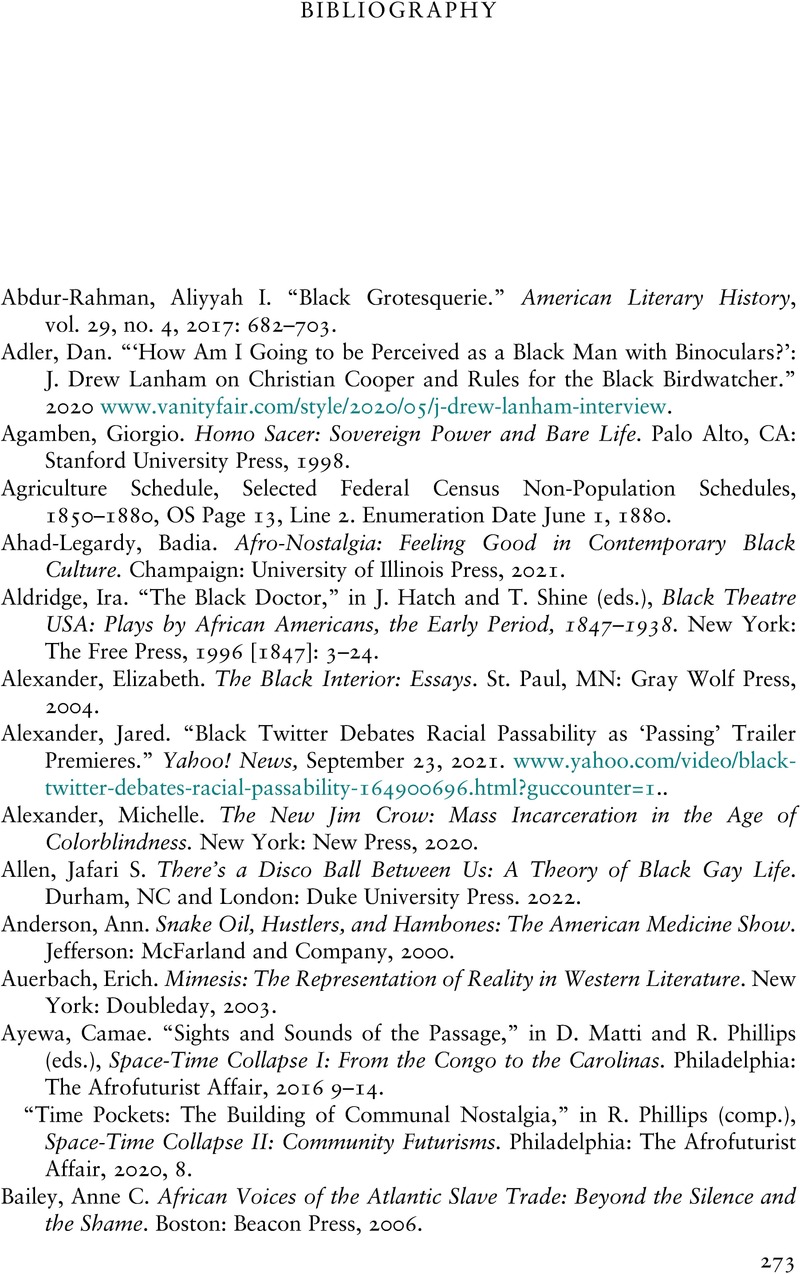Bibliography
Published online by Cambridge University Press: 09 May 2024
Summary

- Type
- Chapter
- Information
- The Cambridge Companion to the Black Body in American Literature , pp. 273 - 294Publisher: Cambridge University PressPrint publication year: 2024



